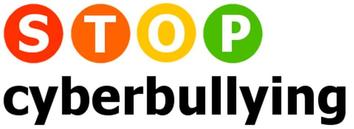Despite seeming awareness of bullying in the workplace, and what can be regarded under this term, its plague on the workplace continues. A Guardian investigation recently revealed severe cases of workplace bullying within UK universities, with over 300 academics accused of bullying staff and students of their institutions.
In the US, a survey found 60% of respondents had been impacted by workplace bullying at some point, while a Slater and Gordon UK survey revealed over half of respondents had been bullied in the workplace. Clearly, workplace bullying remains problem that businesses should tackle head-on.
The first in this series of articles on workplace bullying will explore common types of bullying in the workplace, and what businesses can do to avoid it from taking place amongst their staff.
What is Workplace Bullying?
Workplace bullying has been defined by Citizens Information Ireland as the “repeated inappropriate behaviour that undermines your right to dignity at work”, taking the form of verbal, physical and/or cyber bullying.
In other words, a person is affected by workplace bullying if they have experienced any form of repeated inappropriate behaviour during their time at work, by any member of staff. This definition can also be extended to patients/clients, found in the aftermath of a crackdown on bullying within the UK’s NHS.
Workplace bullying can affect an individual in a number of ways, including feelings of exclusion or intimidation, loss of reputation as well as dealing with aggressive language or tasks not possible for that individual.
Exclusion and Isolation
One of the most common types of bullying in the workplace is the social exclusion or isolation of an individual by another member(s) of staff.
Whether it is conducted by verbally excluding someone within a workplace, physically isolating them or excluding them through cyber bullying and social media channels, this type of bullying can negatively impact the workplace.
An individual who feels excluded from the workplace may feel dissatisfied with their job, reduce their commitment to the workplace, or even begin to experience job insecurity, due their awareness of not fitting in with the rest of a workplace.
Intimidation
Another common type of bullying is the intimidation of an individual. Again, regardless of whether this is verbal, physical or cyber intimidation, this can negatively impact a colleague.
Intimidation can be the result of a manager inflicting impossible tasks on a subordinate, and subsequently punishing them for not completing such tasks. Intimidation can also move from the bottom upwards, as colleagues can intimidate a manager, avoiding tasks that should be their responsibility.
Intimidation can affect a person’s emotional and mental well-being, as they begin to feel insecure or scared within their workplace. This will ultimately affect their performance, and in turn, negatively impact on a company and their productivity.
Reputational Damage
Whether resulting from plain gossip, or even in retaliation to consistent inappropriate behaviour, reputational damage is a common result of workplace bullying.
A workplace culture that continues to facilitate gossip and rumour spreading about individuals will be detrimental to the success of a business. Individuals can become unproductive and less committed to work, while a business risks losing talent due to this type of malicious bullying.
Aggressive or Obscene Language
Another common form of workplace bullying can involve the use of aggressive language, feeding into a person becoming intimidated or isolated from other workers. Whether racially or sexually-motivated, obscene language can also be used as a bullying mechanism to intimate, isolate or threaten a colleague.
Why should a Business Tackle Workplace Bullies?
Bullying in the workplace can negatively impact a business in a number of ways. The exclusion or isolation of a person can affect the productivity of a business, as team communication may breakdown as a result. This is particularly true for SMEs, who may have small teams that rely on one another to work smoothly and efficiently together.
The intimidation of colleagues may become so great that an individual may begin to feel insecure within their job, and begin to question their place within an organisation. This could have a negative impact on a company, as it could result in a loss of talent as well as diversity gained through the recruitment of different individuals.
Workplace bullying ultimately results in an increase in stress for the bullied individual. This may result in an increase of absenteeism, negatively impacting the performance of a business.
Finally, if a business was found to have refused or avoided tackling a workplace bully, this could result in reputational loss amongst their internal and external publics and stakeholders.
How Can a Business Tackle Workplace Bullying?
In the UK, organisations such as Bullying UK continue to raise awareness of workplace bullying, using initiatives such as a Japanese anime character to ensure workplaces understand the negative impact bullies can have on their business, and what they can do to tackle them. Unfortunately, such dedicated initiatives are yet to emerge in Ireland.
If a company is aware of bullying taking place between colleagues and/or management, it is important that this business acts fast to find the source of the problem, and to deal with that source effectively.
It is an employer’s responsibility to ensure their employees’ health, welfare and safety are protected and that they prevent any harassment of an employee, under the Employment Equality Acts 1998-2015 in Ireland.
Ensuring communication remains open with the whole team can help curve bullying. This will help establish who the real source of this bullying is, making confrontation of the offender easier. Ensuring communication remains open to all colleagues will also make it easier for a staff member to feel they can speak with a manager if bullying makes an impact on them.
Ultimately, a business should ensure they are willing to tackle a workplace bully, regardless of who that individual is to a company. By taking bullying seriously, workplaces can ensure that they protect the rights of their workers, and the productivity, performance and reputation of their organisation.







 RSS Feed
RSS Feed